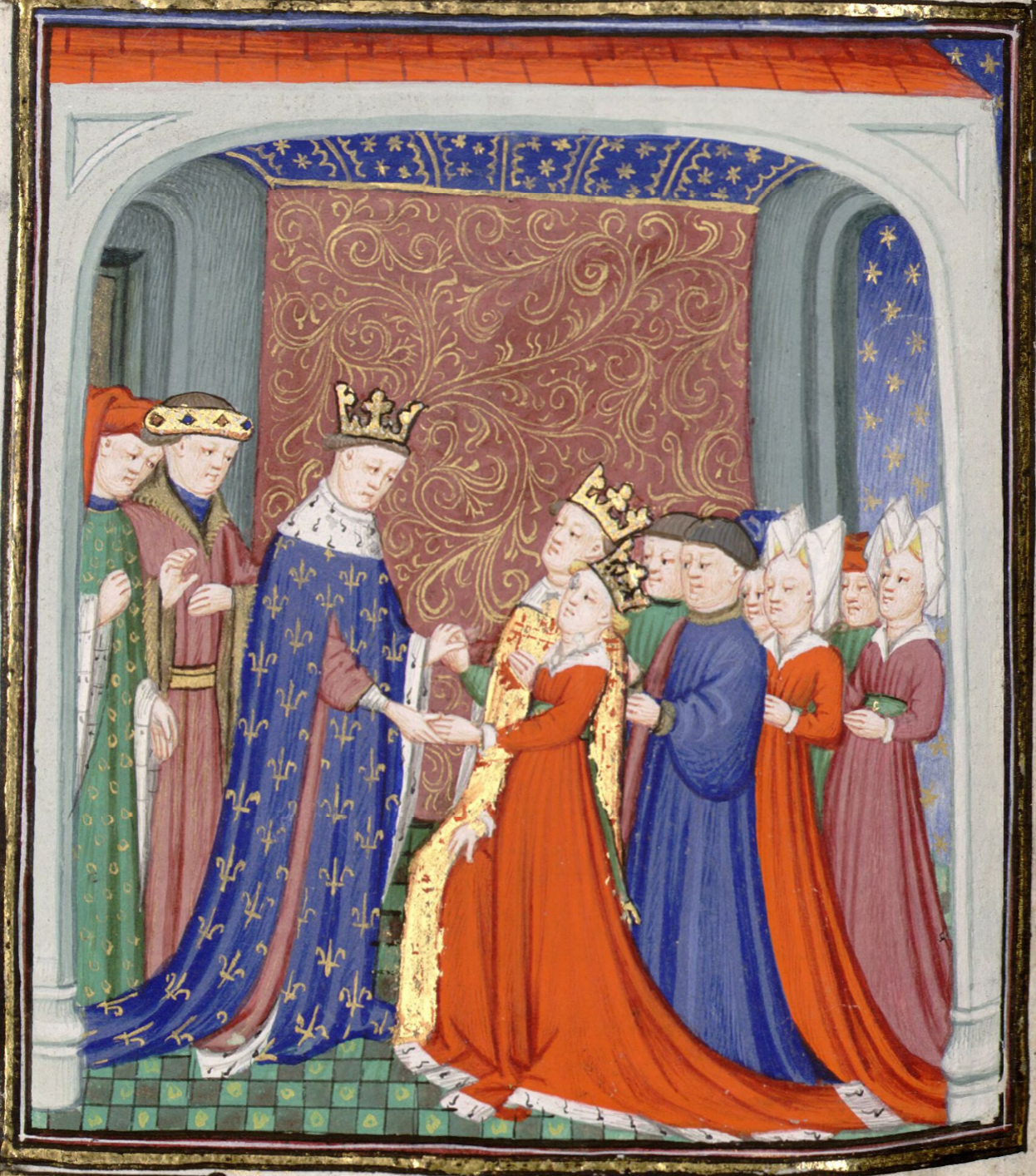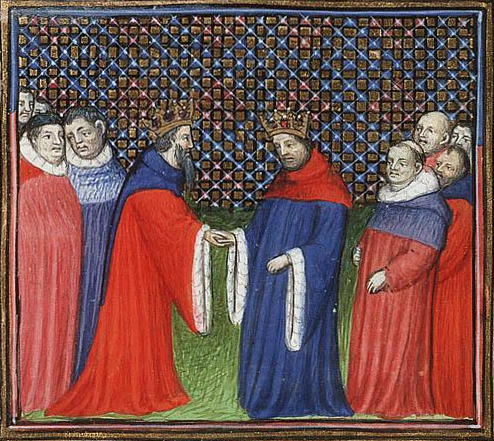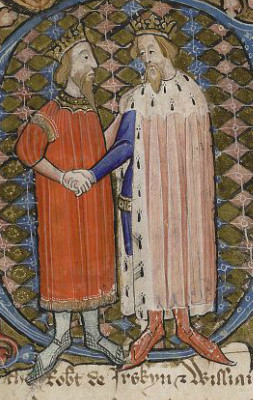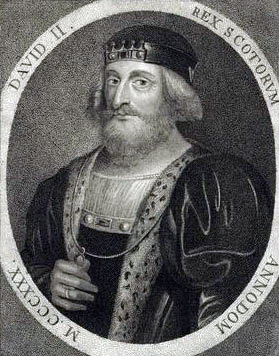1. Overview
David II (Daibhidh a BriuisIrish, Middle, Dàibhidh BruisIrish, Dauid de Brusxno, Dauid BrusScots; March 5, 1324 - February 22, 1371) reigned as King of Scotland from 1329 until his death in 1371. As the only surviving son of Robert the Bruce, David ascended the throne at the tender age of five, becoming the last male ruler of the House of Bruce. His reign, though marked by significant periods of exile and captivity, was crucial in preserving Scottish independence against persistent English attempts at annexation. He was the first Scottish monarch to be anointed at his coronation, a symbolic act that underscored the divine right of kings. Despite facing formidable external threats from Edward III of England and internal challenges from the rival claim of Edward Balliol, David II succeeded in reforming the machinery of government and strengthening the monarchy. He left the kingdom in a remarkably strong and independent position, with royal finances more prosperous than might have been expected given the circumstances. His death without legitimate children led to the end of the Bruce dynasty and the succession of his nephew, Robert Stewart, who founded the House of Stewart.
2. Early life
David II's formative years were shaped by his royal lineage and the political landscape of Scotland following his father's successful struggle for independence.
2.1. Birth and family
David II was born on March 5, 1324, at Dunfermline Abbey in Fife. He was one of twin sons born to King Robert I of Scotland and his second wife, Elizabeth de Burgh. His mother, Elizabeth, passed away in 1327 when David was only three years old. He was the only son of Robert I to survive to adulthood.
2.2. Childhood and education
During his infancy, David was wet-nursed at the Bishop of St Andrews' manor at Inchmurdoch in Fife. In 1326, his father created him Earl of Carrick, and an official royal household was established for the young prince at Turnberry Castle. While limited information is available about his youth, records indicate that King Robert I arranged for Dominican friars to educate David and also purchased books for him, suggesting a focus on his intellectual development.
2.3. Marriage to Joan of the Tower
In accordance with the terms of the Treaty of Edinburgh-Northampton, which established peace between Scotland and England, David was betrothed to Joan of the Tower, the daughter of Edward II of England and Isabella of France. Their marriage took place on July 17, 1328, at Berwick Castle. At the time of their wedding, David was four years old, and Joan was seven. This union was a significant political alliance aimed at solidifying the fragile peace between the two kingdoms. In February 1329, his ailing father, King Robert I, visited the young Earl of Carrick at Turnberry.
3. Reign
David II's reign was a turbulent period marked by ongoing conflicts with England, periods of exile and captivity, and his persistent efforts to restore stability and strengthen the Scottish monarchy.
3.1. Accession and Coronation
David became King of Scotland upon the death of his father, Robert I, on June 7, 1329. Due to his young age and the uncertain Anglo-Scottish peace, his coronation was delayed for two and a half years. The seven-year-old king and his wife, Joan, were finally crowned at Scone Abbey on November 24, 1331. This event was historically significant as David became the first Scottish monarch to be anointed during his coronation ceremony, a ritual typically associated with European monarchs and symbolizing divine sanction.
3.2. Guardianship and early challenges
Upon David's accession, Thomas Randolph, 1st Earl of Moray, was appointed as Guardian of Scotland to govern the kingdom until David reached adulthood, as per Robert I's instructions. The royal government established by Robert I largely remained in power from 1329 to 1332. However, political instability soon emerged. After Moray's death on July 20, 1332, he was replaced by Donald, Earl of Mar, who was elected by an assembly of Scottish magnates at Perth on August 2, 1332. Just ten days later, Mar was killed at the Battle of Dupplin Moor.
Meanwhile, Edward Balliol, a protégé of Edward III of England and a pretender to the Scottish throne, capitalized on the Scottish defeat at Dupplin Moor. With English backing, Balliol was crowned King of Scotland on September 24, 1332, by his English and Scottish supporters. However, his reign was short-lived; he was forced to flee to England in December after the Battle of Annan. Following Mar's death, Sir Andrew Murray of Bothwell, who was married to Christina Bruce, Robert I's sister, was chosen as the new Guardian. He was taken prisoner by the English at Roxburgh in April 1333 and was succeeded by Archibald Douglas (the Tyneman), who also fell in battle at the Battle of Halidon Hill in July of that year. Balliol returned to Scotland the following year as part of an invasion force led by Edward III, marking the beginning of the Second War of Scottish Independence.
3.3. Exile in France

Following the decisive English victory at the Battle of Halidon Hill in July 1333, it became unsafe for the young King David to remain in Scotland. For his safety, David and his wife, Queen Joan, were sent to France, arriving in Boulogne on May 14, 1334. They received a very gracious welcome from King Philip VI, who was an ally of Scotland through the Auld Alliance. Little is known about David's daily life during his exile in France, but he was provided with Château Gaillard in Normandy as his residence. He was also present at the non-violent encounter between the English and French armies in October 1339 at Vironfosse, now known as Buironfosse, in the Arrondissement of Vervins. By 1341, David's loyalists in Scotland had managed to regain the upper hand against the English and Balliol's supporters. This allowed David to return to his kingdom, landing at Inverbervie in Kincardineshire on June 2, 1341. At the age of 17, he took personal control of the government.
3.4. Captivity in England

In 1346, honoring the terms of the Auld Alliance, David II launched an invasion of England. His objective was to divert King Edward III's forces away from France, which had recently suffered a major defeat at the Battle of Crécy during the Hundred Years' War. After an initial success at Hexham, David's army was decisively defeated at the Battle of Neville's Cross on October 17, 1346. David himself sustained two arrow wounds to the face and was captured by Sir John de Coupland.
The captured king was initially taken to Wark on Tweed and then to Bamburgh Castle, where barber-surgeons from York were brought to treat his severe injuries. In January 1347, David II was transferred to London and imprisoned in the Tower of London. Upon Edward III's return from France, David was moved to Windsor Castle in Berkshire, and later to Odiham Castle in Hampshire. While his imprisonment was generally not considered rigorous for a royal captive, the fact that he was denied contact with any of his subjects from 1355 onwards suggests a degree of strictness. He remained captive in England for a total of eleven years. The historical depiction of David acknowledging Edward III as his feudal lord, as portrayed in the play The Raigne of King Edward the Third, is entirely fictitious.
After protracted negotiations with the Scottish regency council, a treaty was signed at Berwick-upon-Tweed on October 3, 1357. Under its terms, the Scottish nobility agreed to pay a ransom of 100,000 merks for their king, to be paid in annual installments of 10,000 merks. This treaty was ratified by the Scottish Parliament at Scone on November 6, 1357.
3.5. Return to Scotland and later reign

David II returned to Scotland accompanied by a large contingent of Scottish nobles and clergy. He also brought with him his mistress, Katherine Mortimer, about whom little is known. Katherine was reportedly murdered in 1360 by men hired by the Earl of Angus and other nobles, although the Earl himself died two years later, likely from the plague or other causes, rather than starvation as some accounts suggest. Katherine was subsequently replaced as David's mistress by Margaret Drummond.
After six years of his return, by 1363, the poverty of the kingdom made it impossible to raise the annual ransom installment. In response, David traveled to London and sought to alleviate the financial burden by offering to bequeath the Scottish throne to Edward III or one of his sons in exchange for the cancellation of the remaining ransom. David was fully aware that the Scottish Parliament would never accept such an arrangement. Indeed, in 1364, the Scottish Parliament indignantly rejected a proposal to make Lionel of Antwerp, Duke of Clarence, Edward III's son, the next king, upholding the principles of the Declaration of Arbroath. Over the next few years, David engaged in secret negotiations with Edward III, which seemingly appeased the matter without a formal agreement.
His first wife, Queen Joan, died on September 7, 1362, at the age of 41, at Hertford Castle in Hertfordshire, possibly a victim of the Black Death. David remarried around February 20, 1364, to Margaret Drummond, the widow of Sir John Logie and daughter of Sir Malcolm Drummond. However, this marriage did not produce any children. David attempted to divorce Margaret around March 20, 1370, on grounds of her infertility. Margaret, however, traveled to Avignon and successfully appealed to Pope Urban V, who reversed the divorce sentence pronounced against her in Scotland. Margaret was still alive in January 1375, four years after David's death.
From 1364 onwards, David governed actively, dealing firmly with recalcitrant nobles and a wider baronial revolt led by his prospective successor, his nephew Robert Stewart. David continued to pursue the goal of a final peace with England. By the time of his death, the Scottish monarchy was stronger, and the country was considered "a free and independent kingdom." Furthermore, the royal finances were in a more prosperous state than might have been anticipated given the prolonged periods of war and ransom payments.
4. Relationships
David II's personal life, particularly his marriages and lack of direct heirs, played a significant role in the succession of the Scottish crown.
4.1. Marriages and mistresses
King David II of Scotland was married twice and had several mistresses, but none of these relationships resulted in legitimate children.
- Joan of the Tower**: David's first wife was Joan, the daughter of Edward II of England and Isabella of France. They were married on July 17, 1328, when David was four and Joan was seven, as stipulated by the Treaty of Edinburgh-Northampton. Despite being married for 34 years, they had no children. Queen Joan died on September 7, 1362, at the age of 41, at Hertford Castle, Hertfordshire.
- Margaret Drummond**: Margaret was the widow of Sir John Logie and daughter of Sir Malcolm Drummond. She became David's mistress around 1361, before Queen Joan's death. David and Margaret married on February 20, 1364. As they also produced no heirs, David attempted to divorce Margaret on March 20, 1370, citing her infertility. However, Pope Urban V reversed the divorce sentence. According to Rome, Margaret and David were still legally married when David died. Margaret died sometime after January 31, 1375, and her funeral expenses were paid by Pope Gregory XI.
- Other Mistresses**: David also had other notable mistresses. Katherine Mortimer was his mistress upon his return from England, but she was murdered in 1360. At the time of his death, his mistress was Agnes Dunbar, whom he reportedly planned to marry. However, this marriage was delayed by the reversal of his divorce from Margaret Drummond.
4.2. Lack of heirs
A critical aspect of David II's personal life was his inability to produce legitimate children. Despite two marriages and several mistresses, he died childless. This lack of an heir meant that David II was the last male of the House of Bruce, leading to the end of the dynasty founded by his father, Robert the Bruce. His death without direct succession paved the way for his nephew to ascend the throne, establishing a new royal line.
5. Death and Succession
The death of David II marked a significant turning point in Scottish history, concluding the Bruce dynasty and ushering in the Stewart era.
5.1. Death
David II died unexpectedly of natural causes at Edinburgh Castle on February 22, 1371, at the age of forty-six. Although he had previously planned to be buried beside his parents at Dunfermline Abbey, he was instead interred before the high altar of Holyrood Abbey. This change in burial location may have been due to Holyrood's proximity to Edinburgh Castle, being only about 1.0 mile (1.6 km) away, or perhaps his successor wished to quickly establish a clear break from the previous reign. The funeral proceedings were overseen by Abbot Thomas.
5.2. Succession
As David II left no children, he was the last male descendant of the House of Bruce. Following his death, the Scottish crown passed to his nephew, Robert Stewart, who was the son of David's half-sister, Marjorie Bruce. Robert Stewart's accession to the throne marked the beginning of the House of Stewart, a dynasty that would rule Scotland for centuries.
6. Assessment and Legacy
David II's reign, though often overshadowed by external conflicts and personal challenges, left a lasting impact on the Scottish kingdom.
6.1. Assessment of reign
Despite spending significant portions of his reign in exile or as a captive in England, David II's rule is assessed as largely successful in ensuring the survival and strengthening of the Scottish kingdom. He successfully navigated the complex political landscape, preventing English attempts to annex Scotland and maintaining its status as an independent nation. David also undertook important reforms to the machinery of government, enhancing its efficiency and centralizing royal authority. By the end of his rule, the Scottish monarchy was in a strong position, and the country's royal finances were surprisingly prosperous, a testament to his administrative efforts amidst the challenges of paying his ransom. He is credited with leaving Scotland as "a free and independent kingdom."
6.2. Criticisms and controversies
David II's reign was not without its criticisms and controversies. One major point of contention was the heavy taxation imposed on his subjects to pay the substantial ransom of 100,000 merks for his release from English captivity. Furthermore, David alienated some of his subjects by using a portion of these funds for his own personal purposes rather than solely for the kingdom's benefit. His most controversial action was his secret proposal to Edward III of England or one of Edward's sons to inherit the Scottish throne in exchange for the cancellation of the outstanding ransom. This proposal was met with indignant rejection by the Scottish Parliament in 1364, as it directly contradicted the spirit of Scottish independence enshrined in the Declaration of Arbroath. His attempts to prevent his nephew, Robert Stewart, from succeeding him, including his efforts to divorce Margaret Drummond to produce an alternative heir, also drew criticism and highlighted his contentious relationship with his eventual successor.
7. Fictional portrayals

David II has been depicted in various forms of popular culture, offering different interpretations of his life and reign.
- Cressy and Poictiers; or, the Story of the Black Prince's Page (1865) by John George Edgar is a historical novel that covers events from 1344 to 1370, including parts of the Hundred Years' War and the Second War of Scottish Independence. The Battle of Neville's Cross (1346) is a key plot point, and David II is featured as one of the principal characters alongside Edward III of England, Philippa of Hainault, and Edward the Black Prince.
- Flowers of Chivalry (1988) by Nigel Tranter is a novel that covers events of the Second War of Scottish Independence from 1332 to 1339. In this work, David II appears as a secondary character, with the protagonists being Alexander Ramsay of Dalhousie and William Douglas, Lord of Liddesdale.
- Vagabond (2002) by Bernard Cornwell also features David II.
- David II is a character in the Elizabethan play Edward III.
- He also appears in the 2012 grand strategy game Crusader Kings II as the monarch of Scotland in 1336.